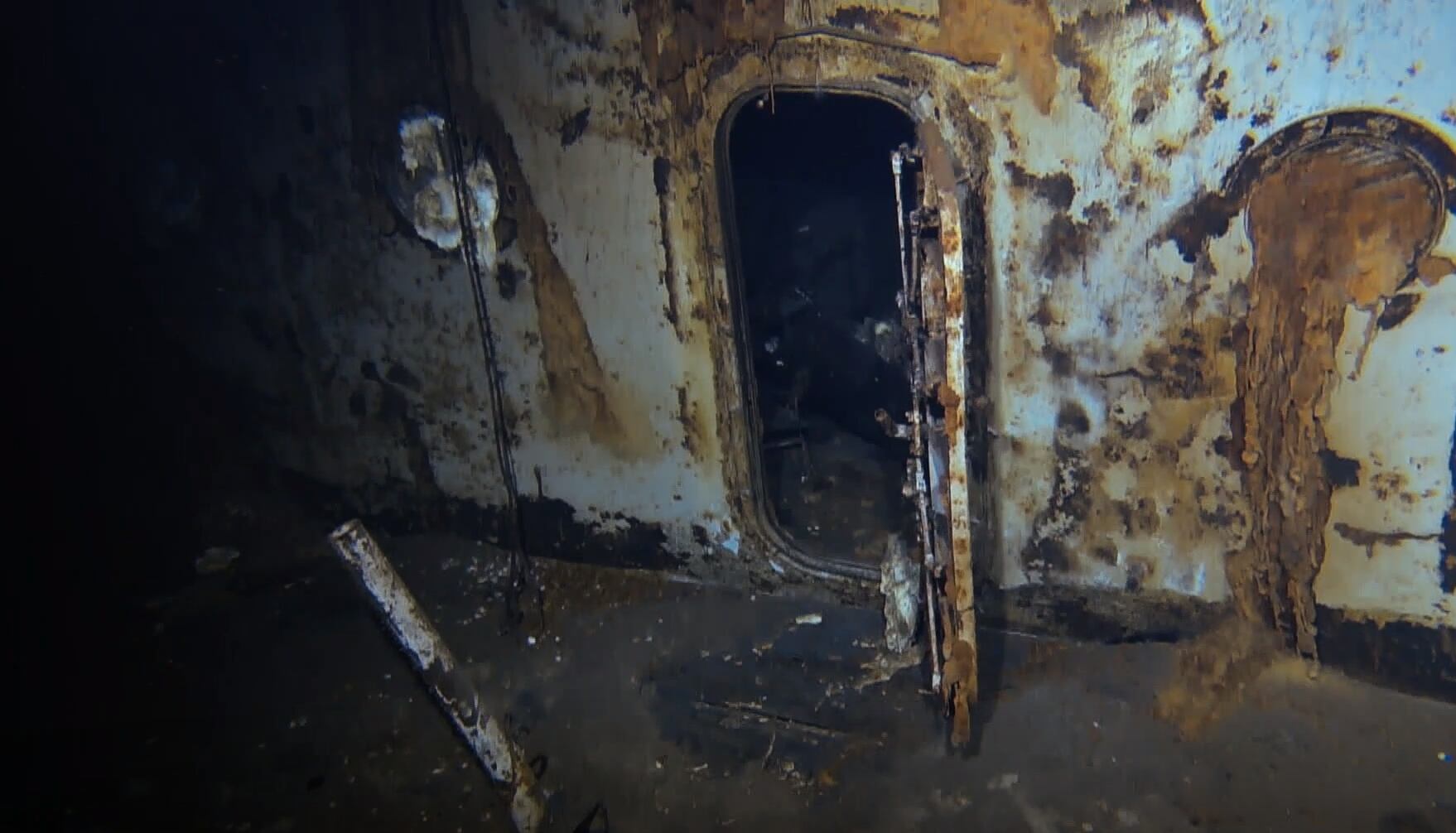“You’d hear shipmates screaming for help — you really couldn’t tell where the screaming was coming from.”
The horrors recounted by survivors of the July 30, 1945, sinking of World War II heavy cruiser Indianapolis are the subject of a new PBS documentary. It was recently screened with both those surviving sailors and the crew members of a littoral combat ship that will bear the famous warship’s name, once it’s commissioned.
Narrated by Kyle Chandler (“Argo,” “Manchester by the Sea”), “The USS Indianapolis: The Final Chapter” highlights the 2017 shipwreck discovery of what remains the Navy’s single greatest loss at sea.
Nearly 900 crew were killed after “the Indy” was struck by Japanese torpedoes and capsized. Many were torn apart by sharks in the days that followed its sinking.
Of the 1,196 sailors and Marines on board, only 316 were rescued.
“This film is important for tying the crew to the Indianapolis because it gives them a sense of history,” said Cmdr. Colin Kane, the commanding officer of the new LCS Indianapolis, in a Navy release.
“I really hope that it drives this home because it will bring to the forefront the sacrifices that these sailors made back in World War II.”
The World War II crew of the Indianapolis had been tasked with delivering to Tinian crucial components for “Little Boy,” the atomic bomb that was dropped on Hiroshima.
Scores of sailors died after the two Japanese torpedoes slammed into the Indianapolis, which rolled over and sank about 12 minutes after the explosions, taking 300 crewmen with it.
Survivors were cast adrift, many without life jackets or rafts.
“I never thought about dying out there,” Harold Bray told today’s sailors before the screening. “I was 18 years old. Who dies at 18?”
Bray vividly recalled the helplessness of trying to save one shipmate in the chaotic aftermath of the warship’s capsizing.
“He was all messed up,” he said. “His lips all blistered, he was floating around. I grabbed him and pulled him in. I tried to tie him to the raft, but I guess I didn’t get a good knot on him. He just disappeared.”

The aftermath of the ship’s sinking became a seemingly eternal voyage through hell: scorching sun during the day, hypothermia-inducing waves at night, waterlogged life vests, salt poisoning, oil as thick as paste coughed from the ship’s mangled engine rooms, and the relentless sharks.
“It’s much easier to die, believe me, than it is to live,” Edgar Harrell told young sailors before the screening. “You’ve got to fight to live. But all you’ve got to do to expire is just give up. Let your head drop in the water. And I saw that so, so many times.”
The sunken wreck of the Indianapolis was discovered Aug. 19, 2017, on the floor of the Philippine Sea by an expedition crew embarked on the Research Vessel (R/V) Petrel. Their mission was led by the late Microsoft co-founder, Seattle Seahawks owner and philanthropist Paul Allen.
“To be able to honor the brave men of the USS Indianapolis and their families through the discovery of a ship that played such a significant role in ending World War II is truly humbling,” Allen said when the Indianapolis was found more than 18,000 feet below the the waves.
The R/V Petrel’s high-definition cameras captured pristine imagery of scattered items strewn across the ocean floor.
During the screening, boots, helmets and even tubes of shaving cream became small reminders of World War II life on board the heavy cruiser.
It left an impression on the sailors who will crew the Freedom-class LCS Indianapolis that was that christened on April 14.
“In 18 years of service I’ve never been assigned to a ship with this kind of connection,” said Culinary Specialist 1st Class Cesar A. Torres. “It keeps me in tune with the casualties who kept up their efforts until their last breath.
“It inspires me to be a better sailor.”
J.D. Simkins is the executive editor of Military Times and Defense News, and a Marine Corps veteran of the Iraq War.





